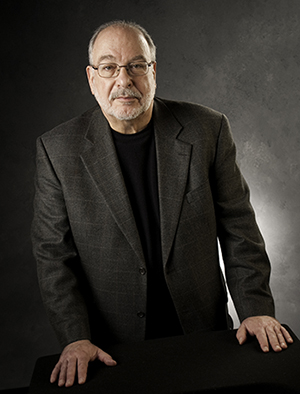
Kenneth Waltzer
Professor and Holocaust scholar Kenneth Waltzer has no trouble coming up with topics to research in the Visual History Archive.
There’s his current study of the rescue of the children and youths at Buchenwald, or his investigation of the brick mason school in Auschwitz. Or there’s the project he just started a few weeks ago researching how many of the boys liberated from Buchenwald went on to serve in the Palmuch underground army in Israel. No matter what, he says, “if you know the material and you can get into it, you can find all kinds of ways to research in the testimonies.”
Waltzer is a steadfast user of the Visual History Archive at Michigan State University, where he recently retired as professor of social relations and policy and was director of Jewish studies. He was the first to encourage University of Michigan-Flint to become a Visual History Archive full access site in 2011, and has taught undergraduate courses using the archive at both Michigan State and UM Flint. He also helped teach university researchers and educators about using testimony at the Summer Workshop on Holocaust and Rwanda Testimonies Jul. 13-17, 2015, at UM Flint.
As a researcher, testimony enables Waltzer to do very detailed research of life inside the concentration camps. He can find out who people were with or which barracks they were in and study similarities and differences in how they describe their experiences.
For example, he was able to investigate an enigmatic person named Gustav who many of the boys of Buchenwald describe in their testimonies as a father figure, but who Elie Wiesel describes in his book Night as quite menacing. Waltzer has also looked into the oft-repeated refrain from Holocaust survivors that they were “all alone” in the camps and had no one to rely on but themselves, and found that in fact many people did enter the camps with fragments of family, friends, and acquaintances, which then gave them a degree of agency to act on their own.
“Testimonies enable you to go beyond where people have gone before,” Waltzer said. “They get you in the gate, where people are placed in the barracks and satellite camps and so forth, and you can follow them.”
He said he advises fellow researchers and also teachers who want to bring testimony into the classroom to always go into the Visual History Archive with active questions – an “agenda” – to direct their search, not just watch testimonies passively with no idea what they’re looking for or what they want. Teachers also need to choose the clips they want to show their students ahead of time, before they start showing testimony in class.
When he teaches college courses with the Visual History Archive, he is consistently impressed with his students’ work and their passion for testimony. They are sometimes skeptical at first that they will be able to meet Waltzer’s requirement that they produce original work, but he said they are always able to succeed.
He’s also noticed that many students get frustrated when interviewers don’t ask certain questions in the testimony that the students want to the answers to. Waltzer said this is the sign of a good student – one who is thinking for herself and seeking insightful information.
“A lot these kids are going to go on and be lawyers and take depositions, [or be] social workers and have to listen to people, so this is wonderful training for them,” he said.
Whether or not students plan to become historians, lawyers, or something else entirely, they quickly grasp the power of testimony.
“They all say it makes the history more personal, it makes it more granular with the detail of everyday life, it makes it more comprehensible,” Waltzer said.